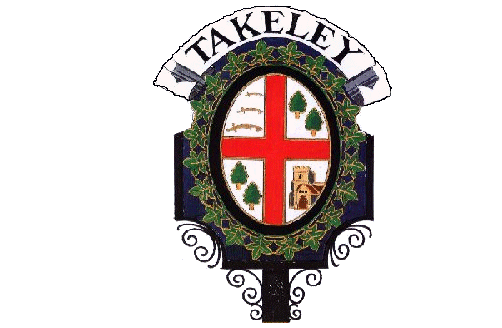|
This is a story of a young man (my great great grandfather) who was born in the village of Takeley , in the county of Essex .
Whether this young man was a leader or easily led, we may never know, but we do know that he was convicted of a crime, sentenced to death and later transported for 14 years to the colony of New South Wales (NSW). James was destined to sail to Port Jackson, (also known as Sydney Cove) in New South Wales, Australia. Here on the other side of the world lay detention, marriage, children and what? There lies the mystery.
I have only been researching my maternal Family for three years. During this time I have, for some inexplicable reason, formed an empathy and affection for 'my James'; to let people know that his great great grandaughter, me, really does care and would dearly love to know what happened to him.
Takeley is an ancient village approximately 8 miles in length, which totals some 3000-odd acres in the county of Essex, in the southeast of England .
I am told that woods and fields surround it. My great great grandfather James Sach was baptised at Holy Trinity Church , Takeley, on the 25 th April 1810 . He was the first-born of three children to William and Maria Sach.
William Sach had married Maria Day
on 10 th November 1805 . James's other siblings were Robert, who was baptised 18 th September, 1814 , John, who was baptised 16th March, 1817 and Mary who was bapised 11 th June 1820 .
Records show that James was listed as "Ag. Labourer"a “Ploughman who Milks". I am not sure where he worked, or for whom. His life, however, took a dramatic change in 1827 when he was just17 years old.
The events that were about to unfold would not only radically affect his future but impact on the lives of his family too. James would have had little idea of the dreadful ordeal he was going to have to endure as a result his actions over the Christmas of 1827.
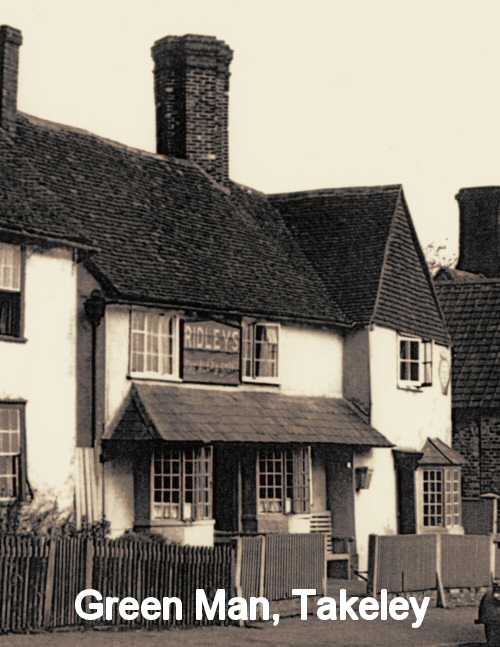
The Kent & Essex Mercury Newspaper , dated Tuesday March 18 1828, reported the court case which resulted from James actions. The story went that on the 25 th December, 1827, Thomas Choppen
the keeper of the Green Man Pub at Takeley, observed three young men drinking at the bar of his House (what we would now call a pub or hotel). The three mentioned were James Sach (my great great grandfather), James Archer and William Cook. The three stayed drinking until about 10 o'clock when they all went away together.
Williams Parsons, Constable of Takeley, stated that on the 27 th December 1827 he went with the Prosecutor to look for some sheep, which had been stolen from the yard (the property of William Patmore), in which he found large quantities of blood as if the sheep had been killed there. The footprints of two people were followed into Prior's Wood and afterwards traced to Sach's house. Sach was in bed at the time. A pair of shoes was standing by James' bedside. The comparison was made with the shoes and footprints, which he had traced from the woods to Sach's house.
William Patmore had deposed to the Court that he saw all his sheep were safe on Christmas night and that on going into his yard the next morning he had noticed that two of his sheep were missing. William Patmore had traced the footprints into Prior's Wood where he had found the skins of two sheep and found them to be the same as he had lost as they had the mark of his Initials.
Sach confessed! He said that he, in the company of two others (James Archer and William Cook) went to Mr. Patmore's yard, killed two sheep and carried them into Prior's Wood, where the sheep were skinned and the meat divided between them. The value of said sheep was £2. (Source: Kent & Essex Mercury Newspaper- Tuesday March 18,18128 P.3 col.1-2)
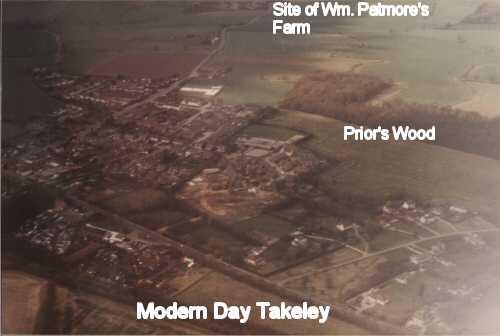 After their arrest, the three prisoners were conveyed to Chelmsford where they were confined for some three months before being tried before Justice The Honourable Sir James Burroughs and John Clark Esq at the Essex Lent Assizes on March 12th 1828. Upon being found guilty of the crime the punishment was death, butfortunatly for JAmes this was later commuted. James Sach and James Archer were sentenced to 14 years' transportation to the Colony of New South Wales. William Cook's sentence was reduced to 18 months' imprisonment in England . After their arrest, the three prisoners were conveyed to Chelmsford where they were confined for some three months before being tried before Justice The Honourable Sir James Burroughs and John Clark Esq at the Essex Lent Assizes on March 12th 1828. Upon being found guilty of the crime the punishment was death, butfortunatly for JAmes this was later commuted. James Sach and James Archer were sentenced to 14 years' transportation to the Colony of New South Wales. William Cook's sentence was reduced to 18 months' imprisonment in England .
(Source- Pastfinders.net- information requested on my behalf as a private client).
James embarked along with 175 males on the ship “Lord Melville 11(1)" for the long voyage to Port Jackson ( Sydney ) NSW . One can only imagine what must have been going through his mind. He was very young to be leaving his homeland with teh likelihood of never seeing his family again. According the report of the Ship's Surgeons (Dr. G. Roberts) , throughout the journey many aboard succumbed to the intense tropical heat and suffered diarrhoea. The majority of the convict prisoners were ill, but luckily for “my James" he survived, arriving in Port Jackson on May 6 th 1829, aged 19 years. I was nearly two years since he had committed his offence!
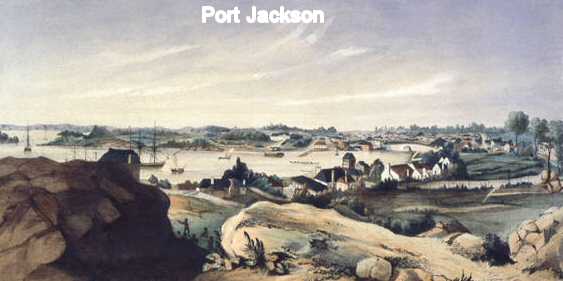 Upon arrival in the new world, Port Jackson NSW, James was assigned, as most convicts were, to serve their sentences amongst the free settlers. He was then assigned to a prominent farming family by the name of “Richard Dunstan" at a place called Wilberforce, along the Hawkesbury River , which was at the time a fair distance from Sydney . In the 1828 NSW Census, Richard Dunstan was married and had four children. Richard had 190 acres, of which 80 acres were cleared and 60 cultivated. He had six horses and 40 head of cattle and had three people (convicts) working for him. As Richard had horses, it meant a horse would have pulled a plough, otherwise land was cultivated by hand hoeing; breaking up new ground for cultivation was very, very hard work. Most of the Hawkesbury farmers grew wheat and corn. Wheat was stooked and cut by hand and then hand threshed. At least one cow would have been milked and butter and cheese made by hand. Firewood had to be cut and brought in and water carried from a well or brick lined underground tank or brought from the river if there was no dam or well. Meat had to be butchered and salted to keep, post and rail fencing built and maintained. Also soap was made from collected fat. So a convict working on a farm would have done any or all of these tasks and much more besides. The assigned convicts lived away from the main house. There they would serve out the remainder of their sentence. James would have endured long hours of hard work from early morning till dusk six days a week and on Sunday attend church, having what little time there was left to himself. Upon arrival in the new world, Port Jackson NSW, James was assigned, as most convicts were, to serve their sentences amongst the free settlers. He was then assigned to a prominent farming family by the name of “Richard Dunstan" at a place called Wilberforce, along the Hawkesbury River , which was at the time a fair distance from Sydney . In the 1828 NSW Census, Richard Dunstan was married and had four children. Richard had 190 acres, of which 80 acres were cleared and 60 cultivated. He had six horses and 40 head of cattle and had three people (convicts) working for him. As Richard had horses, it meant a horse would have pulled a plough, otherwise land was cultivated by hand hoeing; breaking up new ground for cultivation was very, very hard work. Most of the Hawkesbury farmers grew wheat and corn. Wheat was stooked and cut by hand and then hand threshed. At least one cow would have been milked and butter and cheese made by hand. Firewood had to be cut and brought in and water carried from a well or brick lined underground tank or brought from the river if there was no dam or well. Meat had to be butchered and salted to keep, post and rail fencing built and maintained. Also soap was made from collected fat. So a convict working on a farm would have done any or all of these tasks and much more besides. The assigned convicts lived away from the main house. There they would serve out the remainder of their sentence. James would have endured long hours of hard work from early morning till dusk six days a week and on Sunday attend church, having what little time there was left to himself.
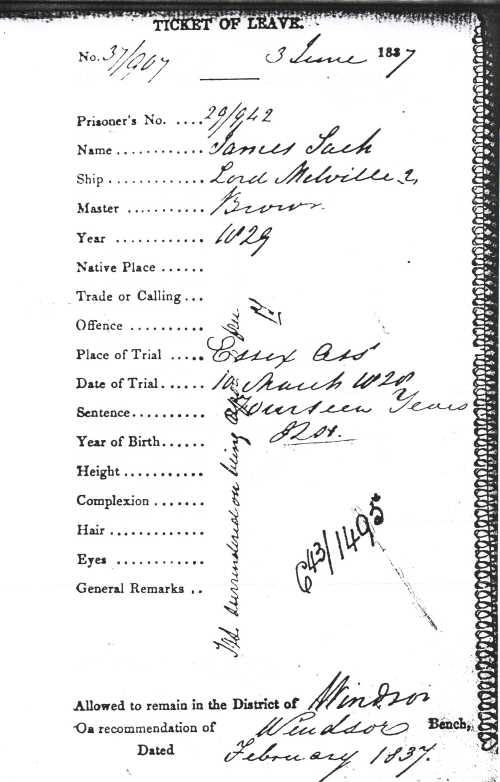 In 1837 James applied for and was granted what was known as a ticket of leave (Source- Tracing your Family History in Australia- Author Nick Vine Hall- ISBN 1-86404 384 9- p.172 col. 15/16). The explanation is as follows. In 1837 James applied for and was granted what was known as a ticket of leave (Source- Tracing your Family History in Australia- Author Nick Vine Hall- ISBN 1-86404 384 9- p.172 col. 15/16). The explanation is as follows.
Tickets of leave were documents in which a convict was allowed to employ himself in any lawful occupation “for his own advantage during good behaviour" within a specified police district. It gave them an exemption from working for the Government/Assignments after arrival in Port Jackson . James sought permission from Richard Dunstan and obtained his ticket of leave (TOL) number 37/907 in the District of Windsor, NSW. Interestingly enough the record sheet shows that James could read & write.
( Source- NSW State Records. Shelf ref.4/4112 State Records Reel No: 927.)
During the next four years little is known about James, then in 1841 he met an Irish Catholic Convict girl named Winifred Burke. Winifred had been convicted of stealing cloth from her employer. She was tried and convicted in County Galway and sentenced to seven years' transportation, arriving onboard the ship Margaret 3 - in Port Jackson April 6 th 1840 . The records show that Winifred could read but not write. It would appear that Winifred became pregnant, as James sought permission To marry from the Governor. This was duly granted.
James and Winifred were married in St Matthew's C of E Church Windsor, In the County of Cumberland, NSW, on April 1 st 1841 after Banns. The Rev. Henry T. Stiles, Chaplain, performed the marriage. Witnesses signed with their mark “X" as did Winifred and the original certificate shows James's signature. Another interesting note was that James's surname had changed from “Sach" to “Saich" and was duly recorded as “Saich". This could have been due to a broad Essex country accent and also that of the person recording and interpreting the details at the time of the marriage.
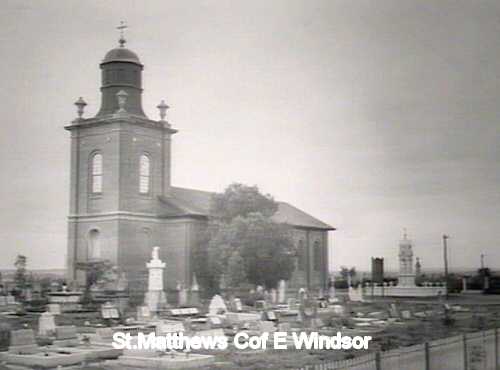
In October 1841my Great Grandfather and the eldest of their four sons, William Saich, was baptised. Then followed Robert in 1845, John 1847, and a fourth son Thomas for whom I am unable to find a Birth Certificate, yet I have his registered death certificate from 1866.
On September 9th 1843 , after leaving the district of Windsor and moving over the Blue Mountains to a place called Hartley and the Fish River District, James applied for and was granted his certificate of freedom.
(Source- Tracing your family history in Australia : Author Nick Vine Hall: ISBN 1 86404 384 9 – p.170.col.10) – A convict could become free by serving his/her sentence and receiving a 'Certificate of Freedom', which commuted the balance of their time. The originals of these documents were given to the persons concerned to prove that they were free men and women and the butts retained by the Government.
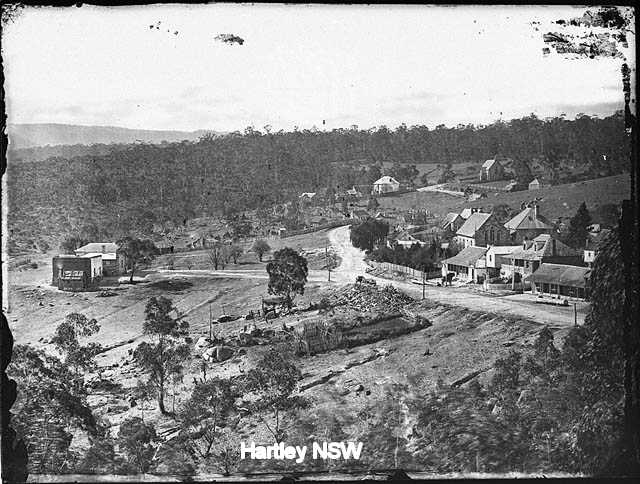
It is very hard to find information on James & Winifred (more research on my part - but I have visited the area of Hartley, and the Fish River areas and life would have been extremely tough, with temperatures soaring in the high 30's Celsius in summer and freezing in the winter. The area itself looks similar to the Plains on the other side of a vast mountain range that stretches for hundreds of miles in a north-westerly direction. There was a lot of road building crossing over the Blue Mountains , also there was mining around the area and later gold fever would hit the town of Bathurst in New South Wales further northwest.
What happened in the years that followed the birth of my great grandfather William and his brothers Robert, John and Thomas? Between 1847 and 1849, it would appear that my James Sach/Saich (later the surname changed yet again to “Sech" and then “Seach") disappeared off the face of the earth.
On March 14 th 1849 my Irish great great grandmother Winifred called herself a widow and married another convict by the name of Richard Fritchley. Winifred could read but not write. Again the surname changed and she called herself Elizabeth Sech. Being Irish, when she said “Saich" it could have sounded like “Sech" or "Seach" as it is known to-day. Did she re-marry for respectability, having four young children to bring up on her own? Could this be the answer? One may never know. Was it because James had deserted her, leaving his family in search of gold? Winifred had four more children by Richard Fritchley and remained in the Hartley, Bathurst/Kelso area before eventually moving back to Sydney .
Winifred Saich/Fritchley died on September 17 th 1897. Her death certificate states she came from County Galway , Ireland. She was buried in the Roman Catholic section ofRookwood Cemetery, NSW. Her second husband, Richard, pre-deceased her on June 21 st, 1897.
Whatever happened to my James? I may never know. There have been numerous possibilities that I have followed, including purchasing several death certificates tono avail. So to you, my dear James, please rest for now. I await more information and guess that you will be found when you want to. I'll be waiting for you!
-----------------------------------------------------------
If there is someone out there who has any interest in the “ Sach/Saich/Sech/Seach" surname from village of Takeley in the county of Essex.England , or any of their living descendants, I would love to hear from you.
Author. (Copyright)-October, 2005.
( Fay Fraser . Queensland, Australia .)
Email: lekahfay@bigpond.net.au
Additional Sources and Acknowledgements.
My Sincere “ Thanks" to the many Genealogy Friends that I have come to know during these past three years,too numerous to mention, but you know who you are.
My Mentor,Carol ine Fraser, who first guided me into Family History.
Mr Steve Hazon and Mr Pat Salmon, (Takeley Local History Society) without whose friendship, guidance and help a great deal of information would be lost. I am indebted to you both.
Other Resources.
NSW- Births Deaths and Marriages.
Twin Town Family History Group Inc. Tweed Heads. NSW.
Aus—Pt Jackson- Convicts List/Rootsweb.com
“Claim A Convict" Homepage- Lesley Uebel,
NSW State Records.
Society of Australian Genealogists.
St Matthew's C of E Windsor . Parish Registers –1810-1856
Fritchely/Crane –Family Descendants.
|
